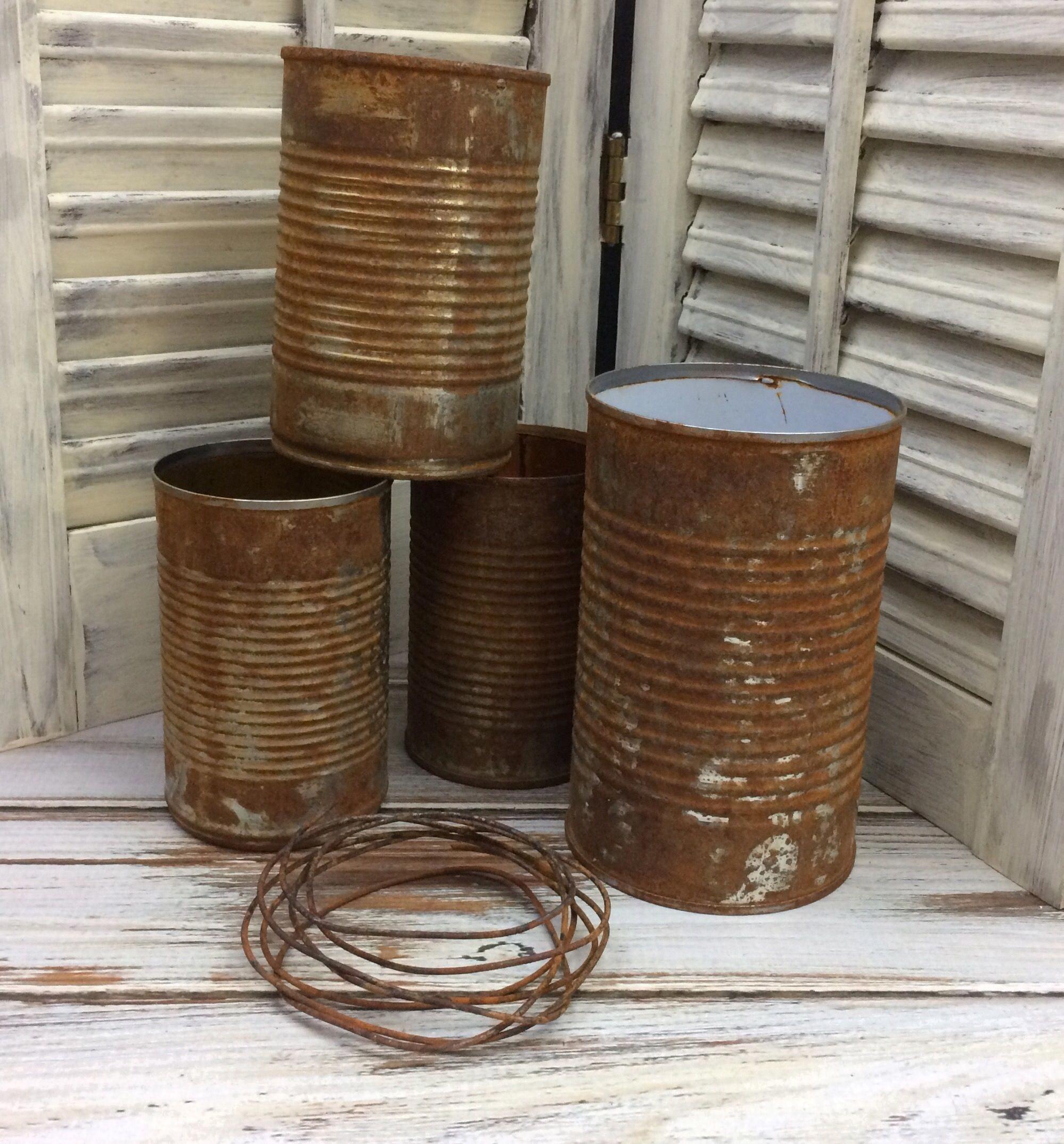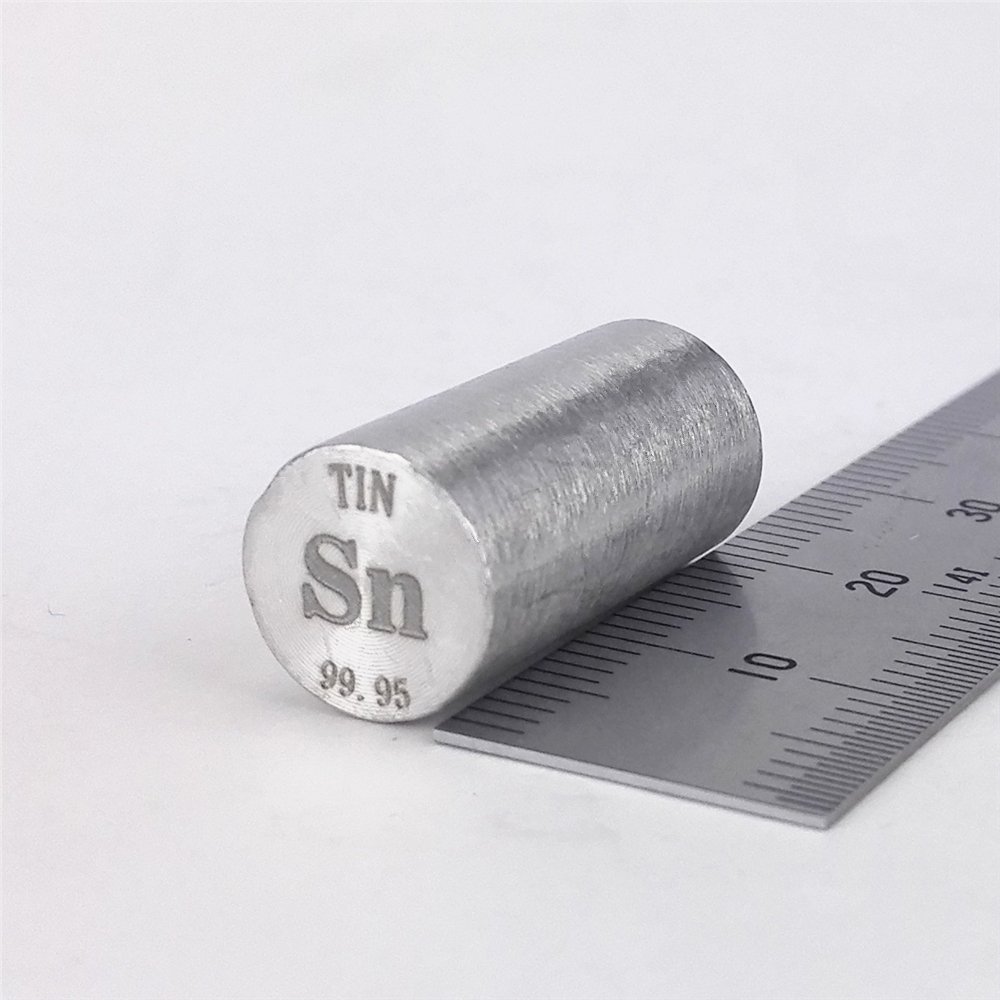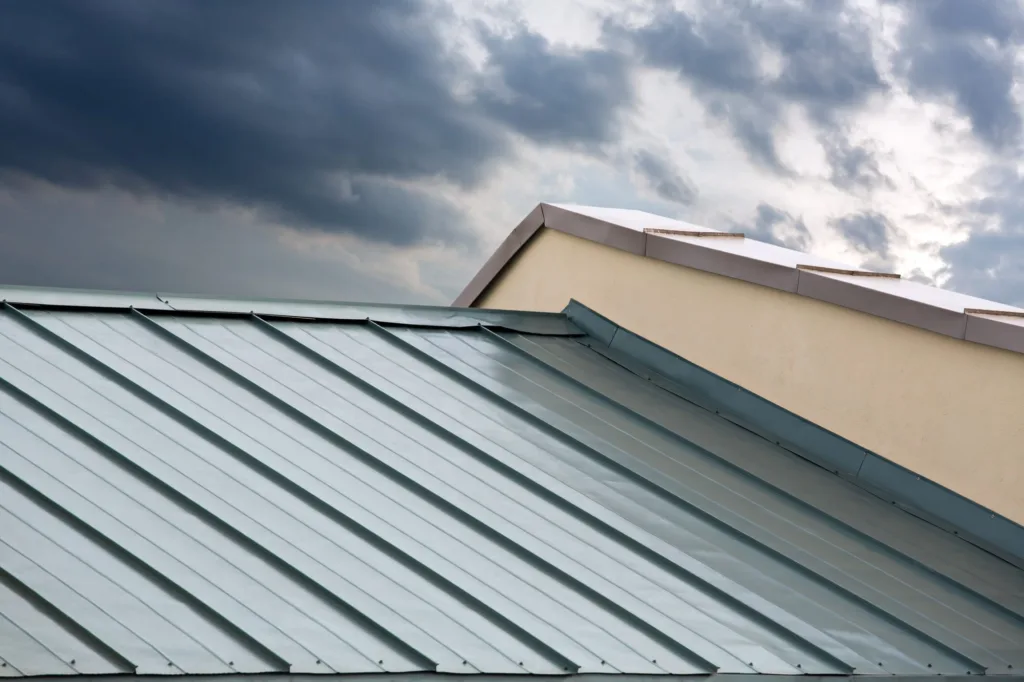Tin, a soft and pliable silvery white metal, is widely used for a variety of purposes, including packaging food and beverages, making alloys, and as a coating material. However, a common question that arises is whether tin rusts or not. In this blog post, we’ll explore the answer to this question in detail.
To begin with, it’s important to understand what rust is. Rust is a form of corrosion that occurs when iron and steel come into contact with water and oxygen. When this happens, the iron in the metal reacts with the oxygen to form iron oxide, which is commonly referred to as rust. This process is accelerated in the presence of salt and other corrosive substances.
Now, coming back to the question at hand – does tin rust? The answer is no, tin does not rust. This is becuse tin is not easily oxidized and resists corrosion due to the protective oxide film that forms on its surface. This oxide film acts as a barrier between the metal and the surrounding environment, preventing the metal from reacting with water and oxygen.
However, it’s important to note that tin can be attacked by strong acids, alkalis, and acid salts. Therefore, it’s essential to avoid exposing tin to these substances to prevent any damage or corrosion.
Furthermore, it’s worth noting that while tin itself may not rust, tin-plated steel can rust. Tin-plated steel is an alloy of iron and carbon that has a thin layer of tin coating over it. This coating of tin protects the underlying metal from corrosion and rust. However, if the tin coating is damaged or scratched, the underlying steel can come into contact with water and oxygen, leading to rust formation.
Therefore, it’s essential to take proper care of tin-plated steel items, such as tin cans, to prevent any damage to the tin coating. Applying a coat of clear lacquer inside and outside the tin can help to stave off rust. However, it’s crucial to test the lacquer before applying it, as there’s a risk that it can act as a solvent, damaging the ink in the designs.
Tin does not rust, but tin-plated steel can rust if the tin coating is damaged or scratched. Taking proper care of tin-plated steel items and avoiding exposure to corrosive substances can help prevent rust formation.
Preventing Rust on Tin
Tin can be protected from rusting by applying a coat of clear lacquer both inside and outside the tin. However, before applying the lacquer, it’s important to conduct a test as the lacquer may act as a solvent that could damage the ink in the designs on the tin. Therefore, it’s essential to ensure that the lacquer is compatible with the tin and the ink used in the design. By using this method, the tin will be able to resist rusting and will maintain its appearance for an extended period.

Source: pinterest.com
Does Water Cause Tin to Rust?
Tin does not rust from water. This is because tin is not easily oxidized and is protected by a thin oxide layer that forms on its surface when it comes in contact with air. This oxide layer prevents the metal from further reacting with water or air, and thus, resists corrosion. However, tin can be attacked by strong acids, alkalis, and acid salts, which can cause it to corrode. Distilled or soft tap water does not harm tin, but hard water or saltwater may cause tarnishing or discoloration over time.
The Causes of Tin Rusting
Tins, which are commonly made of steel, can go rusty due to a chemical reaction called oxidization. Steel is an alloy that conains iron and carbon, and when exposed to air, it reacts with the oxygen in the air, forming iron oxide, also known as rust. Water vapour in the air can accelerate this process by providing the necessary moisture for the chemical reaction to occur. As rust forms on the surface of the tin, it weakens the metal and can eventually lead to holes or leaks. Therefore, it is important to store tins in a dry place and avoid exposing them to moisture to prevent rust from forming.
The Use of Tin to Prevent Rusting
Tin is used to prevent rusting on steel and iron surfaces. This is achieved thrugh a process called tinning, which involves applying a thin layer of tin over the surface of the underlying metal. The tin layer acts as a barrier, preventing oxygen and moisture from coming into contact with the metal surface and causing corrosion. Tinning is a popular method of protecting metal surfaces that are exposed to harsh environmental conditions, such as those found in marine and industrial environments. Tinned steel is commonly used in the food industry as well, as tin is non-toxic and does not react with acidic substances. tinning is an effective way to prevent rusting and extend the lifespan of metal surfaces.
Metals That Do Not Rust
The metal that does not rust is actually a group of metals known as the precious metals, which are platinum, gold, and silver. These metals are classified as pure metals, meaning they do not contain iron, which is the main component that causes rust in metals. Platinum and gold are highly non-reactive, which makes them resistant to corrosion and rust. Silver, on the other hand, can tarnish over time, but it is still relatively corrosion-resistant and more affordable than platinum and gold. Therefore, if you are looking for a metal that does not rust, then the precious metals are your best bet.

The Effects of Rust on Tin Can Planters
Tin can planters can rust if they are not properly treated or coated. However, food cans are often coated inside to prevent rusting. If left unpainted or unvarnished on the inside and exposed to rain, the outside of the can may rust over time. It is important to properly prepare and protect tin can planters if you want to prevent rusting and ensure their longevity.
The Effects of Rust on Food Tins
Food tins can rust. Many food tins are made from metal, such as steel or iron, which can rust over time when exposed to moisture and air. Rust is a natural process that occurs when iron or steel reacts with oxygen in the presence of water or moisture. When food tins rust, the metal can corrode and weaken, which can cause the can to leak or break over time. Rust can also alter the taste and quality of the food inside the can. It is important to inspect food tins for rust before consuming the contents inside. Surface rust on cans or metal lids is not a problem if the can or lid is still in good shape, but cans with deep rust spots or areas sould be thrown out. When the rust is deep, tiny holes open in the can or lid that let bacteria in, which can be harmful to consume. It is important to store food tins in a cool, dry place to prevent rust and to check them regularly for signs of corrosion.
The Properties of Tin Metal
Tin is a metallic chemical element that belongs to the carbon family and is classified as Group 14 (IVa) in the periodic table. It is a soft, silvery white metal that has a bluish tinge, and it has been known since ancient times as an important component of bronze, an alloy that also contains copper. Tin is commonly used for plating steel cans that are utilized as food containers due to its non-toxic properties. It is also utilized as a component in metals used for bearings and as a solder in vrious applications. tin is a versatile metal that has a range of uses in various industries.
The Properties of Tin Metal
Tin is classified as a post-transition metal, which is a group of metallic elements that have properties that are in between those of the transition metals and the nonmetals. It is located in Group 14 of the periodic table, aong with carbon, silicon, germanium, and lead. Tin is a soft, silvery-white metal that has a low melting point and is malleable, ductile, and highly resistant to corrosion. It is widely used in the production of various alloys, such as bronze, pewter, and solder, as well as in the manufacture of tinplate, which is used to make cans for food and beverages. tin is an important industrial metal that has a wide range of applications and is an essential component in many products that we use in our daily lives.

Does Aluminum Rust?
Aluminum tins do not rust. Rusting is a term used specifically for iron and steel when they react with oxygen and water to form iron oxide, wich gives them a reddish-brown color and causes them to weaken and eventually disintegrate. Aluminum, on the other hand, does not contain iron, so it cannot rust. However, aluminum can still corrode, which is a similar process but does not involve the formation of iron oxide. Corrosion occurs when aluminum comes into contact with certain substances, such as acids, salts, or alkaline materials, which can cause the surface of the metal to deteriorate or discolor. To prevent corrosion, aluminum is often coated with a protective layer of oxide or other materials, such as paint or plastic, which helps to keep it intact and durable over time. aluminum is a highly versatile and durable material that is widely used in many applications, from packaging to construction to transportation, due to its unique properties and resistance to corrosion.
The Longevity of Tin Products
Tinned foods last a long time because the canning process effectively kills all the bacteria present in the food. This is achieved through a combination of heat, pressure, and steam whih sterilizes the contents of the tin. Once the canning process is complete, the can is sealed with an airtight lid which prevents any microorganisms from entering and spoiling the contents. This means that canned foods can remain fresh for years without the need for added preservatives or chemicals. However, it’s important to note that while canned foods do not have a specific expiration date, it’s generally recommended not to keep them for longer than two years. This is because over time, the quality of the food may deteriorate, affecting its taste and nutritional value.
The Dangers of Eating Rust
Rust is a reddish-brown coating that forms on iron or steel when exposed to oxygen and water. The thought of ingesting rust may sound concerning, but according to the U.S. Environmental Protection Agency (EPA), eating a small amount of rust is unlikely to harm your health. Rust is essentially a combination of iron and oxygen, and both of these elements are essential for the human body. In fact, iron is a vital mineral that the body needs to produce red blood cells, which transport oxygen throughout the body. However, if you have a rare condition called hemochromatosis, which causes your body to store too much iron, ingesting rust could be harmful. This is becuse hemochromatosis can lead to iron overload, which can damage your internal organs over time. It’s also worth noting that while eating a small amount of rust is generally considered safe, ingesting large amounts of rust or other metals can be toxic and potentially deadly. Therefore, it’s best to avoid eating rust altogether and stick to a balanced diet that contains all the essential nutrients your body needs.
The Effects of Rust on a Tin Roof
A tin roof can rust over time. Tin roofs are typically made of steel or aluminum with a coating of tin. When the coating on the tin roof wears off, the underlying metal can be exposed to the elements, leading to the formation of rust. Rust is caused by oxidation, which occurs when metal comes into contact with oxygen and moisture. Rust can weaken the metal and cause it to corrode, leading to leaks and oter damage to the roof. However, with proper maintenance and the application of a protective coating, a tin roof can be protected against rust and corrosion. It’s important to inspect the roof regularly and address any signs of rust or damage as soon as possible to prevent further deterioration.

Can Tin Prevent Iron from Rusting?
Tin can protect iron from rusting. Tin is a metal that is less reactive than iron, meaning it is less likely to undergo oxidation reactions that lead to rust formation. When a tin coating is applied to iron, it forms a physical barrier between the iron and the surrounding environment, preventing oxygen and water from coming into contact with the iron surface. This effectively stops the rusting process and protects the iron from corrosion. Tin coating is commonly used in the manufacturing of metal cans for food and beverages, as well as in the construction of roofs and othr outdoor structures. However, over time, the tin coating may corrode, exposing the underlying iron to the elements and leading to rust formation. Therefore, regular maintenance and inspection are necessary to ensure the continued protection of the iron.
Removing Rust From Tin
You can remove rust from tin. One effective method is to soak the tinware in white vinegar, which can dissolve the rust. If the vinegar doesn’t cover the entire object, you can also soak a clean cloth in vinegar and wipe the tin. The longer you soak the tinware, the easier it will be to scrub off the rust. You can then use a rough sponge or aluminum foil to scrub away the rust. It’s important to note that prevention is key in avoiding rust on tinware, so be sure to keep it dry and avoid exposure to moisture.
Conclusion
Tin is a metal that is resistant to rust and corrosion due to its protective oxide layer. However, tin cans can rust over time due to the iron content in the steel used to make them. To prevent rusting, applying a coat of clear lacquer both inside and outsie the tin can be an effective solution, but it’s important to do a test before applying it to avoid any damage to the ink in the designs. It’s also worth noting that tinning can be used as an alternative method to protect steel and iron from corrosion and rust. while tin may not rust easily, it’s still important to take necessary precautions to maintain its longevity and prevent any potential damage.
